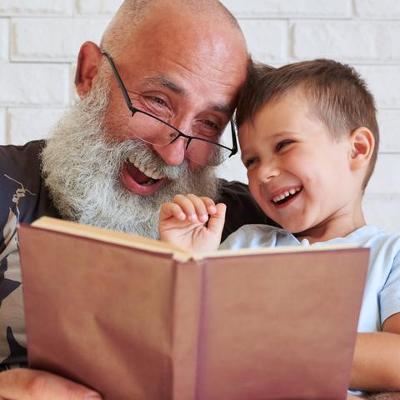Beginning to read

Speaking and reading are closely linked. A child who doesn't use many words, will be less ready to read.
Tell your child the name for anything they don't know. This helps children learn new words and helps them to become better readers.
Children often enjoy learning new words about a subject that they are interested in. Think about young children who can tell you long and difficult names of dinosaurs, animals, or types of car.
- Talk about your day. Talk about things you see in books and on screen, then think about what might happen next or how the characters were feeling
- Try using your phone to take a photo and make up a story. For example, a selfie of you and your child at the beach could be a story about a boat out at sea, or meeting a friendly shark, or finding pirate treasure. You could add a small amount of text to your photo and read it to your child
Knowing that the squiggles we call writing have a meaning, and recognising a few letters or words are the first steps to reading. Many children first read the name of a supermarket or a stop sign in the road, because they see these words fairly often and know what they mean.
Learning to read is sometimes called an apprenticeship. This is because children learn best by seeing others around them using reading in daily life, for example:
- On phones and screens
- In magazines and papers
- Shopping lists
- Post-it notes
- At storytime
You can borrow books for free at Norfolk libraries and all children can have their own library card.
Find out more about libraries for 0-5s
Take a look at Norfolk libraries' online children's catalogue

